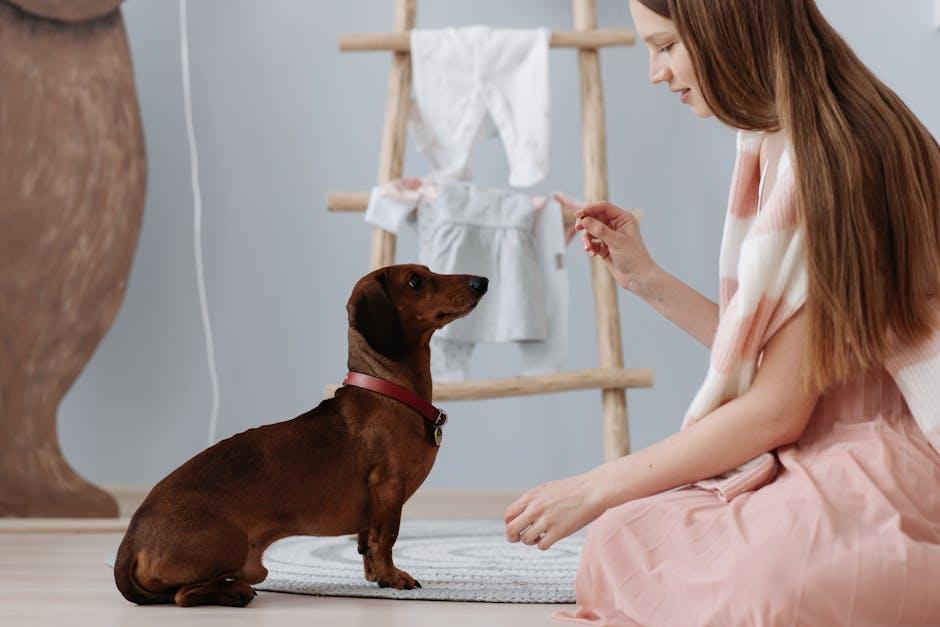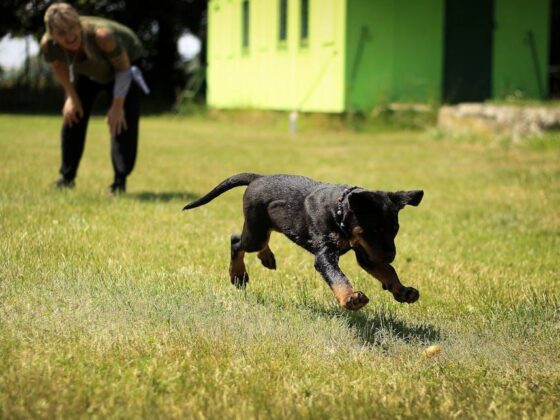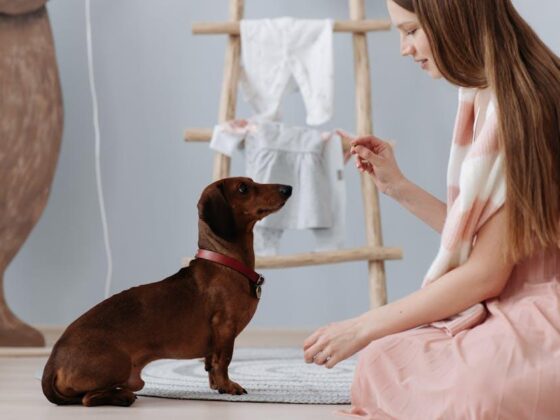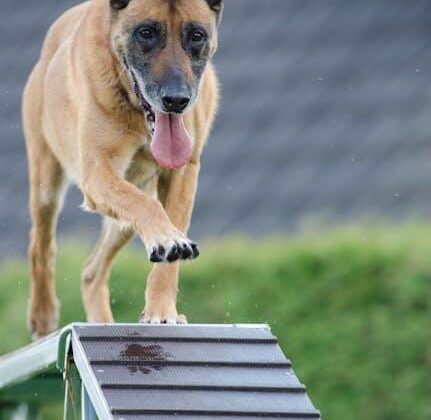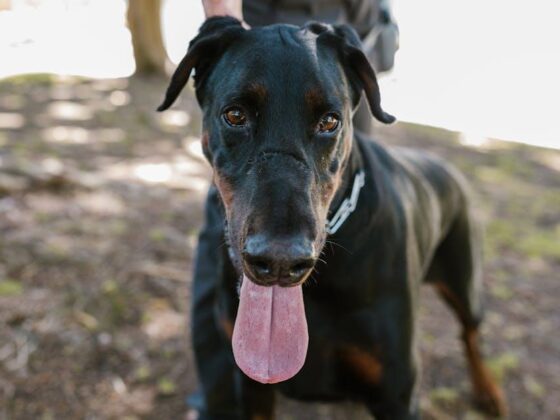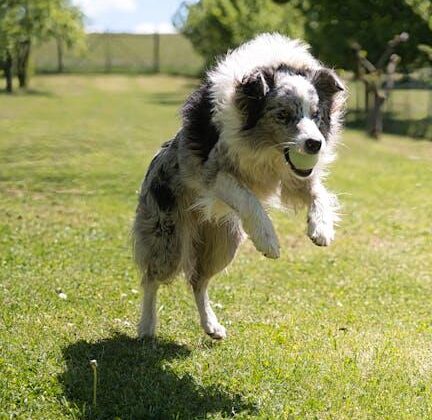hey there, fellow dog lovers! 🐾 If you’ve ever found yourself wondering why your furry friend thinks the couch is a chew toy or why they insist on barking at the postman like they’re protecting the crown jewels, you’re not alone! Welcome to “Mastering Home Dog Training: Tips for Pawsome Success!” 🐶✨
Training your pup can feel like trying to teach a toddler how to use a fork—messy, chaotic, and sometiems downright laughable. But don’t worry! Whether you’ve got a feisty little Chihuahua or a big, goofy Grate Dane, we’re here to turn those training woes into triumphs. With a dash of patience, a sprinkle of love, and a few snazzy tips, you’ll be well on your way to a happy, well-behaved pooch. So grab some treats, put on your training shoes, and let’s dive into the splendid world of dog training! Your furry companion’s transformation is just a wag away! 🐕💖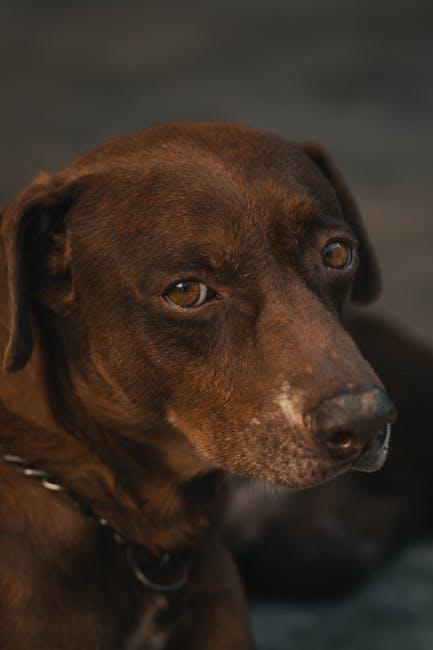
Get Your Pooch to Listen: Building a Strong Foundation
Building a solid foundation for your pooch’s training journey is essential for long-term success. To kick things off, consistency is your best friend! make sure everyone in your household is on the same page about commands, rules, and routines.here are a few tips to keep in mind:
- Use the same commands and tones consistently.
- Establish a daily routine for training sessions.
- Reward positive behavior promptly.
Next, focus on positive reinforcement to foster a trusting bond with your furry friend. Rather of relying on harsh corrections, celebrate the good things your dog does! Offering treats, praise, or playtime can work wonders in motivating your pet. For a more organized approach,consider setting up a simple tracking system:
| Behavior | Reward | Notes |
|---|---|---|
| Sit | Treat + Praise | Keep sessions short and fun! |
| Lie Down | Toy + Play | Use a calm voice. |
| Come | Affection + Treat | Practice in a secure area. |

Fun with Training: Making Learning a Game
Turning dog training into a fun adventure can enhance your bond with your furry friend while making the learning process much more enjoyable. Consider incorporating games that promote vital skills into your routine. Some easy-to-implement ideas include:
- Hide and Seek: Perfect for practicing ‘stay’ and ‘come.’ You hide, and when your pup finds you, reward them!
- Treasure Hunts: Hide treats or toys around your home or yard for your dog to discover. This sharpens their sense of smell and problem-solving skills!
- Obstacle Courses: Set up a DIY course using household items like chairs and broomsticks to challenge their agility.
Incorporating training games doesn’t just make learning fun; it also increases your dog’s enthusiasm for tasks they might or else find repetitive. Consider adding a point system for completed commands, rewarding your pooch with treats or special playtime when they reach certain milestones.Check out this simple points table to track your training games:
| Game | Points Earned |
|---|---|
| Hide and Seek | 5 |
| Treasure Hunt | 10 |
| Obstacle Course | 15 |

Consistency is Key: Creating a Routine Your Dog Loves
Establishing a daily routine for your furry friend can substantially enhance their overall happiness and behavior. Dogs thrive on predictability, and by consistently following a schedule, you help reduce their anxiety and instill confidence. Build a routine that includes:
- Regular walk times: Aim for the same time each day to create a habit.
- Mealtimes: Feed your dog simultaneously occurring daily to regulate their digestion.
- Training sessions: short, fun training sessions in the morning or evening keep their minds sharp.
- Playtime: Set aside specific times each day for interactive play to promote bonding.
To keep your dog engaged, vary the activities within your routine. Incorporating different toys and environments can make even a familiar routine feel fresh and exciting. Create a simple table to track your dog’s daily schedule:
| Time | Activity |
|---|---|
| 7:00 AM | Morning walk |
| 8:00 AM | Breakfast |
| 10:00 AM | Training session |
| 2:00 PM | Fetch at the park |
| 6:00 PM | Dinner |
| 8:00 PM | Evening cuddle time |
By crafting a routine that evolves with your dog’s needs and interests, you’ll not only enhance their training progress but also strengthen your bond with them. Remember, a happy dog is a well-trained dog!
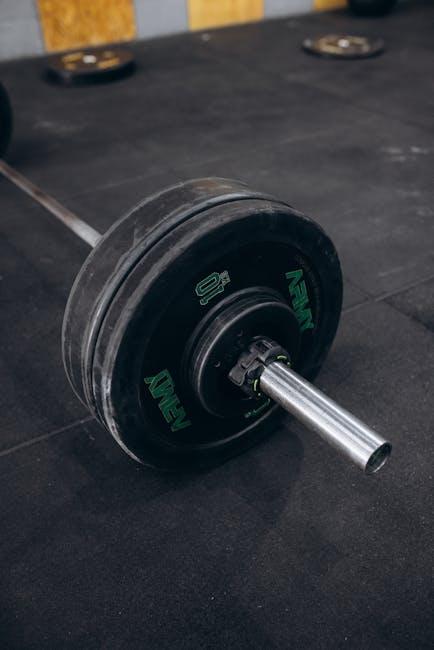
Common Mistakes to Avoid: Tips for Stress-Free Training sessions
when diving into home dog training, it’s easy to slip into some common pitfalls that can led to frustration for both you and your furry friend. Inconsistent commands are a major headache; your pup won’t understand what’s expected if you’re using different words. Stick to a set of clear commands and use them consistently. Additionally, avoid overloading your dog with too many new tricks at once. Focus on a few foundational skills before moving on to more advanced training. This ensures your dog grasp the basics firmly, leading to greater success down the road.
Another mistake to steer clear of is using negative reinforcement. Instead of shouting or scolding when your dog doesn’t get it right,prioritize positive reinforcement. Treats, praise, and playtime are much more effective for building a trusting relationship. Also, don’t forget about the element of patience! Training should never feel rushed. Schedule short sessions, and be sure to take breaks to keep your dog engaged and make learning enjoyable. Remember: a calm and happy trainer fosters a calm and happy dog!
Q&A
Q&A: Mastering Home Dog Training: Tips for Pawsome Success!
Q1: What’s the first step to training my dog at home?
A1: First off,get your dog in the zone! Choose a quiet space where distractions are minimal—think cozy living room corner or your backyard. Start with bonding exercises, like playing fetch or tug-of-war, to create a positive atmosphere.
Q2: How do I establish a connection with my dog during training?
A2: Establishing connection is all about consistency and trust! Spend quality time with your pup, use their name often, and reward them with treats or praise when they respond to you. Engaging in playtime or simple bonding activities helps solidify that connection.
Q3: What basic commands should I start with?
A3: Start with the classics: “Sit,” “Stay,” “Come,” and “Leave it.” These commands are essential for safety and good manners! Use clear signals and a cheerful voice, and don’t forget the treats! Positive reinforcement goes a long way.
Q4: How long should I train my dog each day?
A4: Keep training sessions short and sweet—about 5 to 15 minutes a couple of times a day is perfect! Dogs have attention spans like goldfish sometimes, so quick bursts of fun are much more effective than long, drawn-out sessions.
Q5: What if my dog isn’t responding to commands?
A5: Don’t panic! Every pup learns at their own pace. If they’re not catching on, try to assess the situation—are you in a distracting place? Is it too long between treats and praise? Mix it up, be patient, and most importantly, keep it fun!
Q6: are there specific tools or gear I should use for training?
A6: definitely! Invest in a sturdy leash, some high-value treats (like small pieces of chicken or cheese), and maybe a clicker if you’re into clicker training. A comfy mat can also help your dog understand their “place” during training.
Q7: What are some common mistakes to avoid during dog training at home?
A7: Ah, the classic rookie mistakes! Avoid yelling or showing frustration; remember, it’s all about positivity! Skipping basics or using outdated methods can also be a no-go. don’t forget to celebrate the little wins—the more you cheer them on, the more motivated they’ll be!
Q8: How can I keep training fun and engaging for my dog?
A8: Mix it up! Use different treats for different activities, incorporate fun toys, and change up the training locations. Adding games, like “hide and seek,” can also keep things fresh and exciting. The key is variety and lots of tail-wagging fun!
Q9: When should I seek professional help for training?
A9: If you find yourself feeling overwhelmed or if your dog has specific behavioral issues like aggression or excessive barking, it might be time to call in a pro.dog trainers can offer personalized tips and strategies to address unique challenges.
Q10: Any last tips for pawsome success in home dog training?
A10: Absolutely! Celebrate every small victory, maintain a relaxed atmosphere, and shower your pup with love! Training is a journey you’re on together, so enjoy the ride—and provide plenty of belly rubs along the way! 🐾✨
The Conclusion
And there you have it, folks! With these tips and tricks in your training toolkit, you’re well on your way to becoming your dog’s favorite teacher.Remember,patience is key,and every wag of the tail means you’re making progress—mission pawsome success achieved! 🐾
Whether your fur baby is a curious puppy or a wise old soul,the journey of training can be a rewarding adventure filled with laughter,learning,and lots of slobbery kisses. So grab those treats, put on your training hat, and enjoy the bonding experience. Your pup will thank you for it!
If you have any questions,stories,or paws-Up pics from your training sessions,don’t hesitate to drop a comment below. Happy training, and here’s to a well-behaved pooch and a harmonious home! Until next time, keep those tails wagging! 🌟🐶

